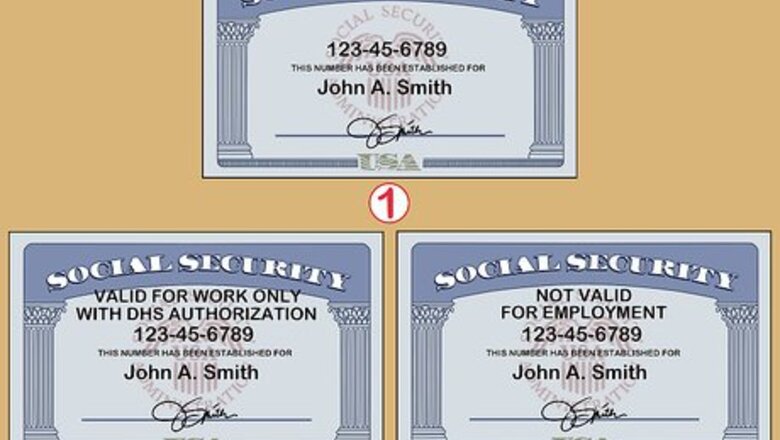
views
Checking the Social Security Card

Take note of the type of social security card you are examining. The SSA issues three forms of social security card. If you are an employer seeking to verify the work eligibility of a potential employee, this information is the first thing you should check. The first shows a person's name and social security number, and authorizes that person to work without restriction. The second, in addition to the name and number, notes that the person is "valid for work only with DHS authorization," meaning the person is allowed to work on a temporary basis so long as they have authorization from the Department of Homeland Security. Finally, a card that bears a name and number and states "not valid for employment" represents an individual who has been issued a social security card for a non-work purpose and is not eligible for employment in the United States.

Check the name on the card. It should match the name on the person's other forms of identification, such as a driver's license or passport. Most of the time, when you will be checking the veracity of a person's social security card, you will also have access to other forms of identification for this individual. Make sure the name is spelled the same across all of these documents. The social security card also has a line for the person's signature. Make sure this signature matches other instances of the person's signature, both in spelling and handwriting format.

Check the basic features of the card. The card should be printed on banknote paper, similar to the paper used for currency, and has a distinctly different feel and weight from regular paper. The card should bear the words "Social Security" on the front, along with the SSA's official seal. It should also have the words "This number has been established for" printed across the seal, and the person's name and social security number should be printed on the front. There should be a place for the person's signature, and blank space enough so the person can sign his or her name. The back should not be blank, as the back of a valid social security card contains official information such as where to mail found cards and certain identifying numbers for the card itself. You should also pay attention to the actual card itself. It should not look like it was cut with scissors or other home implement. The sides should be clean, and at least one of them should show evidence the card was perforated at one point (able to be easily torn off a larger piece of paper). The card should be not laminated, as this is prohibited by the SSA due to the fact this process may compromise some of the security features on the card. Looking at the card with a magnified lens should reveal no smudging or running of the ink used on the card.
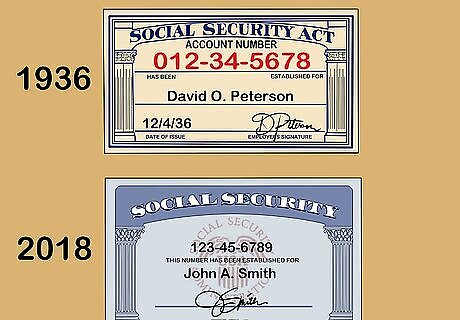
Understand the differences between cards issued at different times. Since the SSA began issuing social security cards in 1936, the administration has issued over 30 different versions of the card, all of which are valid today. You can ask the person whose card it is when it was issued (for U.S. citizens, usually at birth, unless the card was re-issued because it was lost or stolen), and then check this list provided by the SSA detailing how the card has changed throughout its history to determine which features should be on a particular individual's card.

Check the security features of the card. While these features will vary based on when the card was issued, there are several security features that commonly appear on most cards. The background of the card should be an erasable random blue-tinted pattern, meaning any attempt to erase information on the card would erase this pattern as well. Planchettes—small, multi-colored disks—are randomly placed in the paper used to make the card, and should be visible to the naked eye. They are yellow, pink, or blue. Some areas on the front of the card should be raised such that you can feel them when you touch the card. This type of printing is known as "intaglio" printing, and is also used on U.S. currency due to the fact it is difficult to replicate.

Check the SSA's website to stay up-to-date on security features as they are added. In an effort to comply with the Social Security Act, the SSA is required to ensure, as best it can, that a social security card cannot be counterfeited. As such, new security features are introduced as they become available. This list, for instance, details some of the security features that may appear on cards issued after October 31, 1983, and remains current.
Checking the Social Security Number
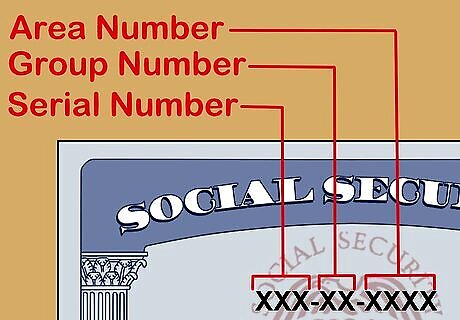
Check the format of the social security number. The number should have nine digits, separated by hyphens in the following format: xxx-xx-xxxx. The three groupings represent an area number, group number, and serial number, respectively. Before 2011, the first three numbers were tied to the card holder's geographic location, reflecting the zip code in the mailing address of the application. Since 2011, however, the SSA generates social security numbers randomly, in an effort to make the process more secure.

Check the number itself. The SSA follows a number of rules when assigning social security numbers, and therefore the number itself should be scrutinized to make sure it passes at least basic scrutiny. The first three numbers cannot be 000, 666, or 900–999. If the social security number was issued prior to June 25, 2011, check this list to match the first three numbers (the area number) with the individual's corresponding state of issuance to make sure they match. Also note which area numbers in this list were not used prior to June 25, 2011. Neither the area, group, or serial number should consist of all zeroes The number itself should be printed on the card in a uniform manner, with all numbers the same height and width, identical spacing between the numbers, and no smudging or running of the ink used to print the numbers.

Use the Social Security Number Verification Service. If you are an employer seeking to validate the social security number of a new hire, your best option is to use this service, provided by the SSA for free for this type of check. This is a foolproof way to ensure your new hires have valid social security numbers, and is easy to register for and then use. Simply follow the instructions printed on the SSA's website to register for the service, receive an activation code, and then login and use the service.
Reporting Possible Social Security Fraud
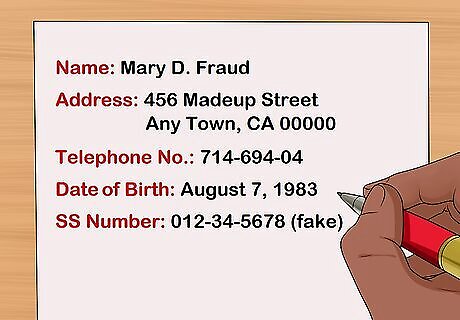
Gather the necessary information. If you believe that someone is using a fake social security card or number to work or obtain benefits, you can report that individual to the Office of the Inspector General of the Social Security Administration. Before you make such a report, however, it is necessary to gather certain information so that the SSA can make the most of your report. You will want to compile a list of the suspect's name, address, telephone numbers, dates of birth, and the social security number they are using. The more information you can provide, the better. It will also be helpful to detail the circumstances of the fraud, including a basic description of what took place along with when and where the violation occurred.
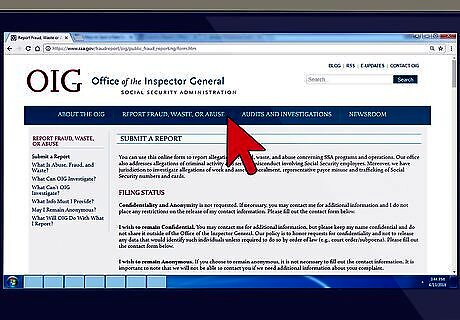
Report the violation to the SSA. The SSA provides an online form you can use to submit a report of a person using a fake social security card or number. You can also reach the SSA by phone, mail, or fax. All of this information is available on the portion of the SSA's website dedicated to reporting fraud. You have the option of remaining anonymous when reporting a social security violation. Your identity will only be released to relevant officials on a need-to-know basis. However, the SSA warns that remaining anonymous may hamper its ability to conduct a thorough investigation. You will not be updated on the status of your report unless the SSA has need to question you directly.














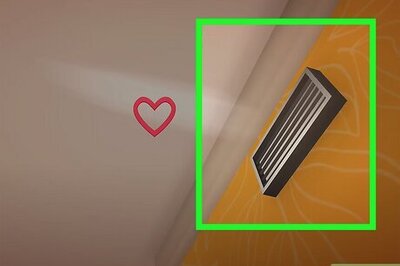


Comments
0 comment